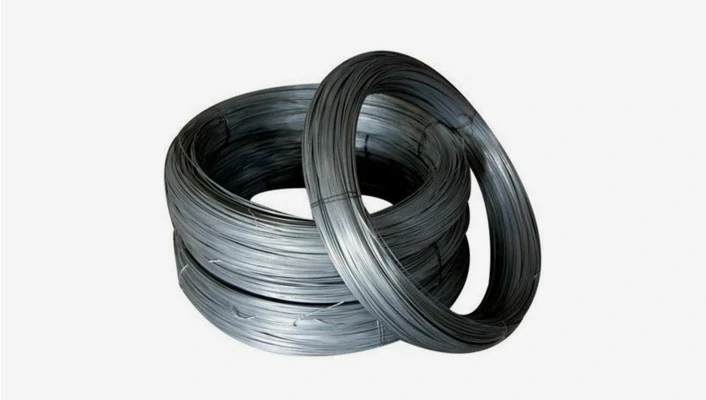helmi . 19, 2025 04:11
Back to list
barbed wire fence
Building a barbed wire fence for cattle is a task that requires meticulous planning, expert knowledge, and a commitment to the safety and well-being of the livestock. This article aims to provide a comprehensive guide, backed by professional insights and firsthand experience, to ensure that your barbed wire fencing project not only meets the needs of your farm but also adheres to industry standards for efficacy and safety.
Safety is a priority when dealing with barbed wire, both during and after construction. Wearing thick gloves and protective clothing during installation can prevent accidental injury. Once the fence is completed, evaluate potential safety risks. Look for sharp edges or loose strands that could harm the cattle, and continuously monitor the fence for wear and tear, particularly after adverse weather events. The ecological impact of installing a barbed wire fence should not be overlooked. Ensure that the fence does not disrupt local wildlife migration paths, as this can lead to ecological imbalance. In areas with large wildlife populations, consider wildlife-friendly fencing alternatives that incorporate barbed wire only where essential, allowing safe passage for non-livestock animals. Maintaining your barbed wire fence is as crucial as its installation. Regular inspections can prevent small issues from escalating into costly repairs. Check for rust, loose wires, or damage after storms. Promptly address these issues to prolong the lifespan of your fence. Investing in quality materials and consistent upkeep ensures that the fence will serve its purpose for many years. For those unfamiliar with fencing, consulting with a professional or experienced neighbor can provide valuable insights and tips specific to your region's terrain and weather conditions. Many agricultural extension programs offer resources and workshops on effective fencing practices, reinforcing the expertise needed to manage a successful cattle farm. In conclusion, building a barbed wire fence for cattle is a practical and effective method of ensuring livestock safety and management. By adhering to expert guidance, selecting quality materials, and committing to regular maintenance, farmers can create robust fences that serve their needs with minimal disruptions. Prioritizing safety, durability, and environmental considerations ensures that your fencing project not only meets but exceeds the necessary standards for successful cattle farming.


Safety is a priority when dealing with barbed wire, both during and after construction. Wearing thick gloves and protective clothing during installation can prevent accidental injury. Once the fence is completed, evaluate potential safety risks. Look for sharp edges or loose strands that could harm the cattle, and continuously monitor the fence for wear and tear, particularly after adverse weather events. The ecological impact of installing a barbed wire fence should not be overlooked. Ensure that the fence does not disrupt local wildlife migration paths, as this can lead to ecological imbalance. In areas with large wildlife populations, consider wildlife-friendly fencing alternatives that incorporate barbed wire only where essential, allowing safe passage for non-livestock animals. Maintaining your barbed wire fence is as crucial as its installation. Regular inspections can prevent small issues from escalating into costly repairs. Check for rust, loose wires, or damage after storms. Promptly address these issues to prolong the lifespan of your fence. Investing in quality materials and consistent upkeep ensures that the fence will serve its purpose for many years. For those unfamiliar with fencing, consulting with a professional or experienced neighbor can provide valuable insights and tips specific to your region's terrain and weather conditions. Many agricultural extension programs offer resources and workshops on effective fencing practices, reinforcing the expertise needed to manage a successful cattle farm. In conclusion, building a barbed wire fence for cattle is a practical and effective method of ensuring livestock safety and management. By adhering to expert guidance, selecting quality materials, and committing to regular maintenance, farmers can create robust fences that serve their needs with minimal disruptions. Prioritizing safety, durability, and environmental considerations ensures that your fencing project not only meets but exceeds the necessary standards for successful cattle farming.
Share
Next:
Latest news
-
Weather Resistance of Woven Wire and Chicken Wire Fencing MaterialsNewsJun.05,2025
-
Umbrella Nails Innovations in Roofing Fasteners for Wind ResistanceNewsJun.05,2025
-
Modern Barbed Wire Fence Designs for Perimeter ProtectionNewsJun.05,2025
-
How Iron Nail Wire Enhances Nail Strength and Installation EfficiencyNewsJun.05,2025
-
High-Security Razor Fence Solutions for Perimeter ProtectionNewsJun.05,2025
-
Durable Wire Netting Fence Solutions for Animal EnclosuresNewsJun.05,2025




